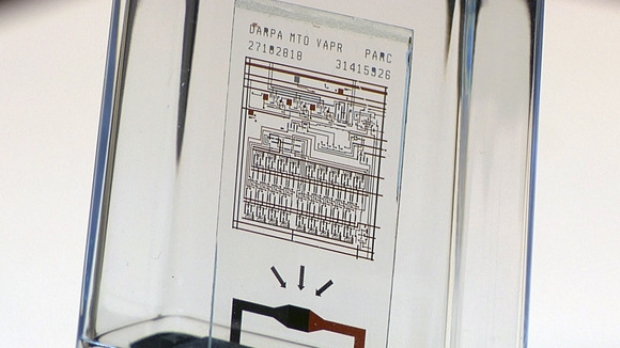While the technology could be a great way to force customers to upgrade, it is more likely to end up as a tool for high-security applications.
The chip, developed as part of DARPA's vanishing programmable resources project, could be used to store data such as encryption keys and, on command, shatter into thousands of pieces so small, reconstruction is impossible.
Gregory Whiting, a senior scientist at PARC in Palo Alto, California said that the chip uses Gorilla Glass.
"We take the glass and we ion-exchange temper it to build in stress. What you get is glass that, because it's heavily stressed, breaks it fragments into tiny little pieces," he said.
When a circuit was switched on, a small resistor heated up and the glass shattered into thousands of pieces. Even after it broke up, stress remained in the fragments and they continued breaking into even smaller pieces for tens of seconds afterwards.
If a chip fabricated on glass was used to store an encryption key, the destruction of the chip could assure complete destruction of the key in an instant -- perhaps as part of a routine process or when the key falls into the wrong hands.
The self-destruct circuit was triggered by a photo-diode, which switched on the circuit when a bright light fell on it. In this occasion, the light was provided by a laser, but the trigger could be anything from a mechanical switch to a radio signal.




